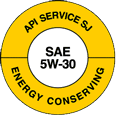Be prepared for shorter days
Daylight Savings Time ends Sunday, November 4th at 2am, and we'll all need to adapt to more driving during the nighttime hours. One thing that might bother you as a result of shorter days is headlight glare. Here are some tips for seeing better (and being seen better!) at night:
Potholes, improperly inflated tires and general wear and tear can cause misaligned headlights. Have them checked for proper adjustment so they light your way efficiently and are not aimed incorrectly at oncoming traffic.
If the lenses are yellowed or cloudy, your headlights will not properly illuminate the road in front of you. Have the lenses restored professionally or with a do-it-yourself kit, or replace them with new ones.
To reduce the glare of oncoming traffic, look to the white line painted on the right side of the road; you won't be looking directly into the lights, but you'll still be able to see ahead of you with your peripheral vision.
Keep your windshield clean to reduce glare caused by light refracted through dirt. Do the same with your headlights so that you can see the road better and as a courtesy to other drivers.
Adjust your outside mirrors so that glare from lights behind you is reduced.
PrevNext
Moore Auto - Test Account proudly powered by CustomerLink Systems.
©2012 CustomerLink Systems. All rights reserved.


 Fixing a car that is noticeably out of tune or has failed an emissions test can improve its gas mileage by an average of 4 percent, though results vary based on the kind of repair and how well it is done.
Fixing a car that is noticeably out of tune or has failed an emissions test can improve its gas mileage by an average of 4 percent, though results vary based on the kind of repair and how well it is done. You can improve your gas mileage by up to 3.3 percent by keeping your tires inflated to the proper pressure. Under-inflated tires can lower gas mileage by 0.3 percent for every 1 psi drop in pressure of all four tires. Properly inflated tires are safer and last longer.
You can improve your gas mileage by up to 3.3 percent by keeping your tires inflated to the proper pressure. Under-inflated tires can lower gas mileage by 0.3 percent for every 1 psi drop in pressure of all four tires. Properly inflated tires are safer and last longer.

